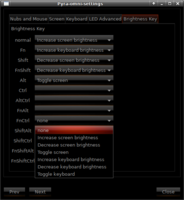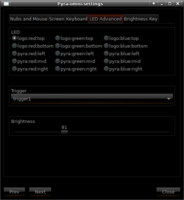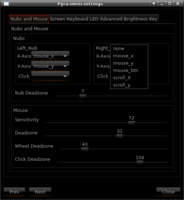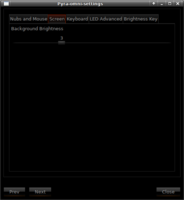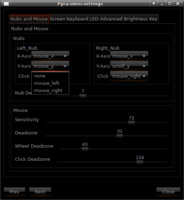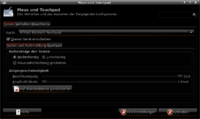In case you wonder what if I'm doing anything useful with my Prototyp.
Unfortunately I still can't do the fancy and important work others do.
So I've used my semester holidays to learn a little about Linux and GTK programming.
I made a simple settings menu for all the Pyra specific stuff that's not within the MATE settings menu.
It's written in GTK and C.
So far it includes:
- Keyboard and Screen backlight brightness
- LED Trigger and brightness
- Brightness Key shortcut customization (needs to add an interface for custom commands)
- Nub Settings
Below are some screenshots from my laptop.
The later two still need testing on the Pyra as I've developed them on my Laptop.
What I plan to do:
- Quick settings page with toggle switches (USB, Wifi, HDMI, if someone tells me how to do it, then SD-ass storage as well)
Maybe it will find it's way into the main OS. Else I might release a DBP
It's the my first program with real life relevance and not a University project. So don't expect it to be perfect
If you have some ideas and imporvements I'm happy to discuss them and improve
Anyways, as my semester has started again I don't have too much time for private projects. I'm not the person to work on multiple things at once.
Unfortunately I still can't do the fancy and important work others do.
So I've used my semester holidays to learn a little about Linux and GTK programming.
I made a simple settings menu for all the Pyra specific stuff that's not within the MATE settings menu.
It's written in GTK and C.
So far it includes:
- Keyboard and Screen backlight brightness
- LED Trigger and brightness
- Brightness Key shortcut customization (needs to add an interface for custom commands)
- Nub Settings
Below are some screenshots from my laptop.
The later two still need testing on the Pyra as I've developed them on my Laptop.
What I plan to do:
- Quick settings page with toggle switches (USB, Wifi, HDMI, if someone tells me how to do it, then SD-ass storage as well)
Maybe it will find it's way into the main OS. Else I might release a DBP
It's the my first program with real life relevance and not a University project. So don't expect it to be perfect
If you have some ideas and imporvements I'm happy to discuss them and improve
Anyways, as my semester has started again I don't have too much time for private projects. I'm not the person to work on multiple things at once.


